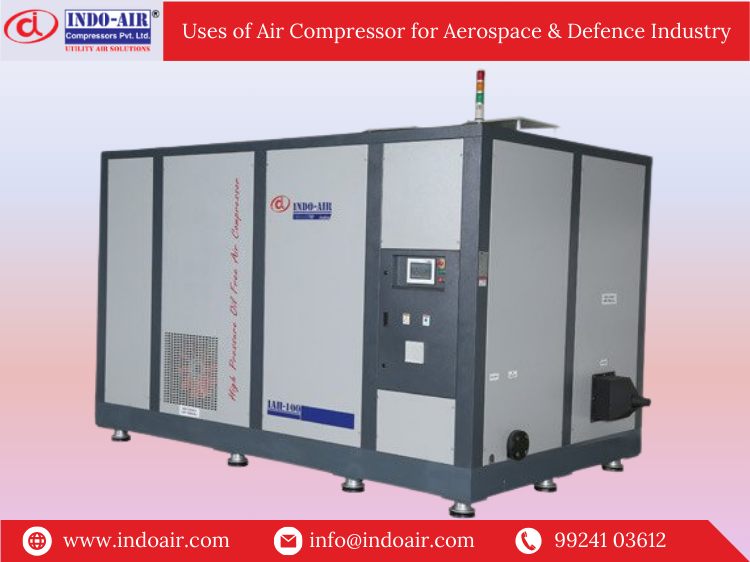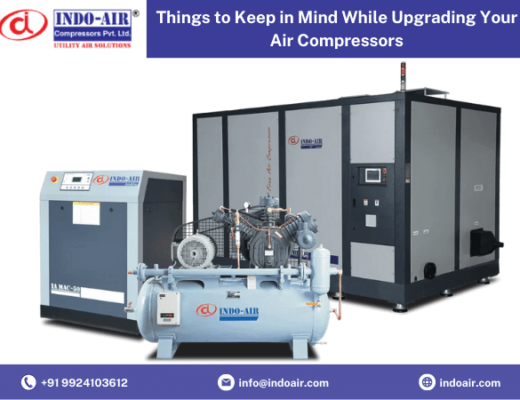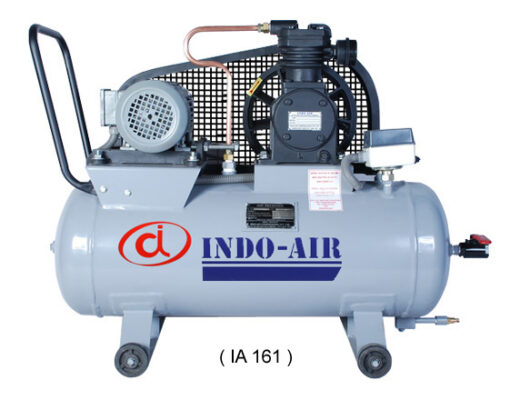In the aerospace sector, nitrogen generators and air compressors made by air compressor manufacturers in India are used extensively. Air compressors are essential to the aerospace industry, being used by pilots, aircraft makers, and maintenance personnel in everything from construction and production to in-flight control. In order to power tools and equipment, clean and prepare parts, power system controls, and test crucial parts and systems, compressed air is widely used in the aerospace and defence industries. In this article we will discuss the uses of air compressors in the aerospace and defence sectors.
Aircraft Manufacturing
Many tools, including rivet guns, screwdrivers, drills, and wrenches, which are essential for assembling aircraft parts, are powered by compressed air. The sheet metal that makes up the body of the aircraft is cut and shaped using air-powered shears and nibblers. Surfaces must be prepared before painting, coating, or metal finishing. For this, air-powered sanders, grinders, and abrasive blasters are employed.
Before assembly, it could also be necessary to properly clean the parts. Compressed air at high pressure is an efficient way to clean components of impurities, oil, or other residues. Aircraft parts are sprayed with compressed air to provide a uniform and seamless surface.
Aircraft Maintenance
In both the military and the civilian sector, compressed air is essential to maintaining the highest level of efficiency and safety in aircraft. Drills, wrenches, and rivet guns are examples of pneumatic tools that are powered by compressed air. Engine parts can be cleaned with compressed air. By applying pressure tests it is ensured that all vital systems, including fuel lines and hydraulics, are leak-free and functional. In certain aircraft models, compressed air can also be utilised for fuel injection. When cleaning surfaces, high-pressure air blasts are utilised to efficiently remove pollutants, grease, and debris.
Missile and Weapons Systems
The military sector uses air compressors for weapons and missile systems. Certain missile ejection systems from launch tubes or aircraft use compressed air from a high pressure air compressor. For specific guided missile systems and additional weapon systems, compressed air is used as well.
Oxygen Generation Systems
Compressed air may be used by onboard oxygen generating systems (OBOGS) in aircraft, particularly military aviation, to provide pilots with breathable air, especially on high-altitude or extended flights. In order to provide oxygen to the pilots and possibly additional cabin crew members as needed, these systems are made to extract oxygen from the surrounding air. An onboard compressor, which is frequently built into the aircraft’s engine system, is then used to compress this air. Compressing air results in an increase in air pressure, which facilitates the separation of oxygen from other gases.
Cooling sensitive equipment in avionics
Sensitive avionics systems can be cooled with compressed air, particularly in military aircraft when reliability and performance are critical and temperatures are high. For electronic systems and components in high-performance aircraft to function at their best and be as reliable as possible, perfect operating conditions must be maintained throughout flight. To ensure effective cooling, airflow can be directed at high-heat zones using an integrated air compressor. Brake heat transfer systems can also rely on compressed air. The brake components’ lifespan can be increased and overheating can be avoided with this quick cooling.
UAVs (Unmanned Aerial Vehicles)
Some drones or unmanned aerial vehicles (UAVs) can be launched using compressed air. Some UAVs are launched using compressed air slingshot devices, particularly those that are used from ground vehicles or naval vessels. Additionally, pneumatic actuators, payload deployment, cooling, and emergency systems can all be implemented with onboard compressed air systems.




